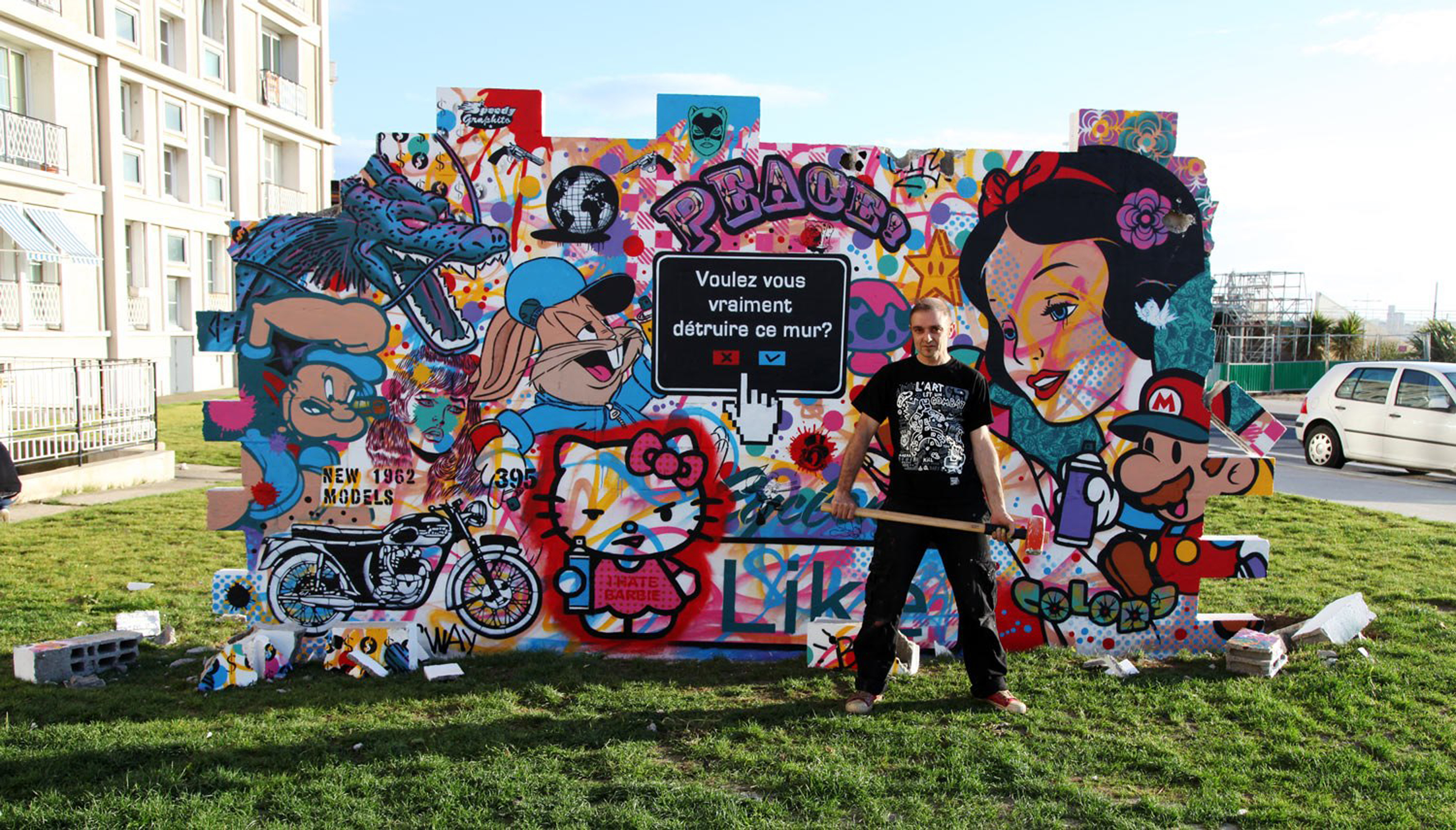My previous column ended with a quote by French graffiti artist Tilt: “The pop culture war is over. America, you won,” along with my wish “Let’s just hope we lose the street art war.” Far from being a Francophile (I don’t love Paris), I harangued against the sameness of American graffiti and the unique directions French artists (JR to Speedy Graphito) were taking it. But now, a few months later, I understand the fickleness that changed French fries to freedom fries. Please cut and paste the following over the aforementioned quote:
“Let’s just hope we win the street art war.”

Speedy’s mural part of Festival Kosmopolite, 2012, in Paris, courtesy the artist and Fabien Castanier Gallery, Studio City, CA.
It began a few years ago. The two largest metro companies in France waged a (still ongoing) legal battle against 56 graffiti artists, from 15 different crews, which they accused of tagging their trains. A season’s worth of police tricks from American TV—wiretapping, tailing, impersonations—yielded arrests. Never mind that some tagging was over 10 years old, the hands behind it now pedicured and wedding-ringed. This severity of scale alluded to something beyond the writing on the walls.
Many saw this case as politicizing against an art form. The French journal Mediapart noted that former Minister of Culture Frédéric Mitterrand had intervened on behalf of ZEVS during his arrest in Hong Kong, “yet he had not shown the same artistic sense to the justice of his country by refusing to support the… graffiti severely condemned in France.” There was also an appeal bearing 3,500 signatures, including filmmakers, journalists and artists.
Speedy Graphito said he only used the walls of Paris because the French art establishment refused to take his paintings seriously. “The old is always difficult to revolutionize.” And the new is always easy to condemn.
A precedent had been established. Late last year came six new arrests. Relying on judicial tools from the previous case, this “gang” was investigated for months, arrested on a Tuesday, and charged the next Thursday—for conspiracy. Which carries penalties far beyond those for destruction of property, including five years in prison. It had never been used against graffiti-ers. The police argued that “the suspects used the subway to threaten to kill police officers” as a cop facing a bullet “was one of their signatures.” The right-leaning paper Le Parisien labeled them “gang taggers” who operated in a “quasi-military” style.
Over here, we’re playing catch-up. In the final weeks of 2012, the LA Superior Court voted to allow the City Attorney’s office to use gang injunctions against graffiti artists. Meaning known members of tagging crew X can now be arrested throughout the state for associating with X crew, violating 10 p.m. curfew, or possessing gang tools—in this case, markers or paint. The LA Weekly reported, “The LA City Attorney’s office pioneered using a gang injunction [against graffiti-ers].” Wrong. That ignobility belongs to the country that pioneered wall-art in the caves of Lascaux.


